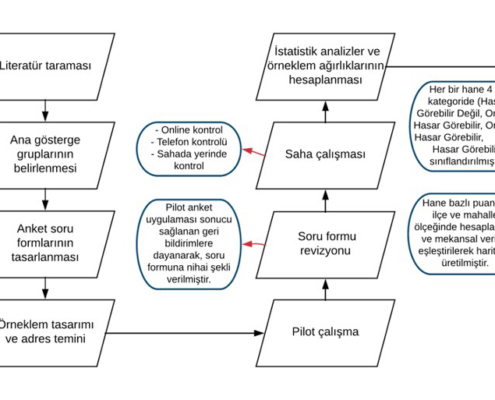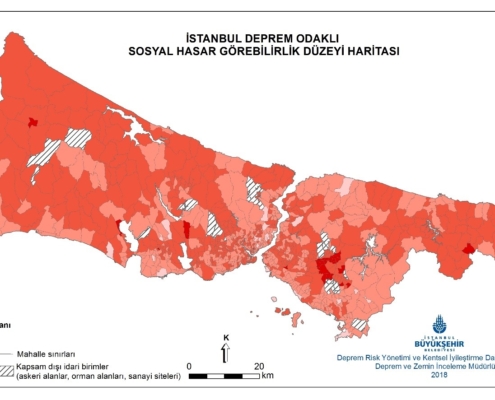Social structure is one of the most important exposure driver during the disaster time. For this reason determination of fragile points related to society is critical during the disaster risk reduction strategy formulation. Istanbul faces multi- disasters hazard. At this point it is crucial to understand social fabric of Istanbul to asses with physical risk together for defining urban risk of Istanbul.
Social vulnerability is chracteristics and circumstances of a community and society that make them susceptible to the damaging effects of hazards and that is related with the coping capacity of community and determinant of the extent of disaster damage. Social vulnerability depends on demographic structure, economic condition, mobilities, values, health system, risk perception, urban belonging, landlordism. These characteristics and conditions of the society and community could increase not only coping capacity but also disaster risk.
“Social Vulnerability Analysis Project Against The Disasters” was conducted by Istanbul Metropolitan Municipality in order to understand city’s capacity how to anticipate, cope with, resist and recover from the impact of hazards with fragile and strong points of its community. In this scope, the survey consisted of 955 sub-districts with 41093 household was made and the information belonged to 139.688 was gathered. The address information of these households were provided from the TUIK (Turkish Statistical Institute) by random sampling. During the project process, firstly the indicators related with social vulnerability were determined depending on a detailed literature review and expert views through iterative meetings. Thereafter, a detailed survey is carried out to gather required data for indicators. Lastly, these indicators are assessed through an Analytical Hierarchy Process to give weight to the indicators and relatively rank the sub-districts based on their level of social vulnerability. Finally social vulnerability maps were produced based on districts and sub-districts. The project was completed in 2018.




